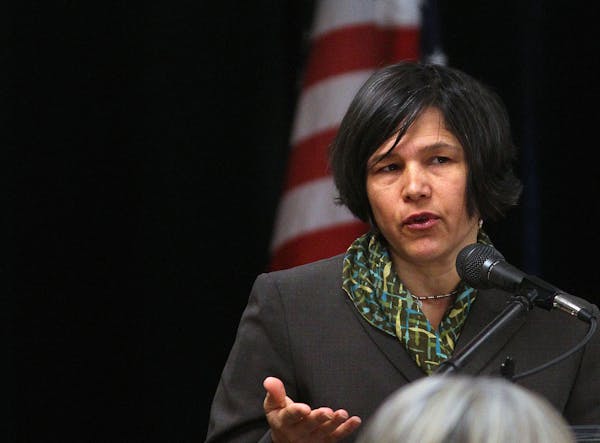The Minneapolis Public Schools are experiencing a new spike in suspensions, after months of steady progress in keeping students in schools.
Educators sent students home 1,626 times from August to December. But in just the first four months of this semester, there were more than 3,000 suspensions.
District officials could not explain the dramatic increase but say they remain committed to reducing suspensions and point to a reduction in suspensions from previous years. However, they remain concerned that an overwhelming majority of suspensions were students of color, a problem that has drawn federal scrutiny.
"We take this very seriously, and we need to maintain the momentum," interim Superintendent Michael Goar said. "I'm fully committed."
Reducing suspensions, particularly among students of color, was a top priority for former Superintendent Bernadeia Johnson.
At the beginning of the school year, she announced a moratorium on suspensions of pre-kindergartners, kindergartners and first-graders. She later said she would be reviewing all suspensions of students of color, a proposal that drew national attention and criticism that the policy was unfair to white students.
She defended the decision in an opinion column in the Washington Post late last November.
Less than two months later, she resigned. Suspension rates began to creep up soon after.
Suspension numbers typically increase, even dramatically, during the spring. Educators are also studying the reason suspensions go up in the spring.
In previous years, the number of suspensions in the spring months have gone up 20 to 40 percent compared to the fall months. This year, suspensions between January and April jumped 80 percent compared to the first five months of the school year.
School officials have a lot at stake in tamping down suspensions, particularly among minority students.
Minneapolis school leaders agreed to more than a dozen changes after a federal inquiry concluded that black students were suspended at significantly higher rates than white students.
Community members and the former board chair say they are concerned and disappointed by the increase and the continued over representation of students of color.
Marika Pfefferkorn, an advocate for reducing suspensions who has worked closely with the district, said teachers interpreted Johnson's initiatives as saying that teachers could not suspend students at all.
"I think they held unto that the first semester," Pfefferkorn said. "But because of the transition in leadership, and because this is still in the first year of implementation, I think they returned to their normal practices."
District officials say they need to examine why the suspensions increased. Robin Francis, who is leading the district's work around behavior standards, said a team of district administrators will meet at the end of the semester to identify trends.
"I know we have work to do, but we are at the right place and we continue to do the work," Francis said.
One area of concern for Francis and others continues to be the trend that students of color make up the majority of the district's suspensions. Johnson's review was supposed to help the district understand why that was happening.
Francis and other district officials meet every two weeks to review every suspension using certain guidelines. They then try to determine if a suspension was warranted. Francis was unable to provide the number of suspensions that were unjustified, saying only that preliminary data is "telling us we are doing the right things."
The district has provided numerous trainings for principals and teachers. Their aim is to help educators identify their biases that may contribute to inequities in the way they dole out suspensions.
In Minneapolis, the majority of teachers are white women and in classrooms with students of color, Pfefferkorn said.
"How that plays out has everything to do with us diminishing the disparity in suspensions," she said, adding the district also needs to allocate more resources for social workers and other support staff.
The district's data is also showing a steep increase in in-school removals, where a student is not sent home for the day but is still removed from the classroom.
Eric Moore, the district's teacher, evaluation and assessment director, said the focus is often on suspensions, but the district has to be careful not to shift discipline referrals in other areas.
"We aren't sending them home, but those students are still missing instruction," Moore said.
Richard Mammen, the school former board chair who helped establish some of the district's new suspension policies, said the district is going to have to work really hard to keep suspensions from increasing further.
"Changing the policy is one thing," Mammen said "Changing the culture is another."
Alejandra Matos • 612-673-4028
Project 2025 platform proposal aims to allow mining in Boundary Waters watershed

Ann Johnson Stewart wins special election, giving DFL control of Minnesota Senate

Democratic U.S. Sen. Amy Klobuchar defeats GOP challenger Royce White

Gov. Tim Walz will return to Minnesota after Trump victory blocks him from becoming vice president

